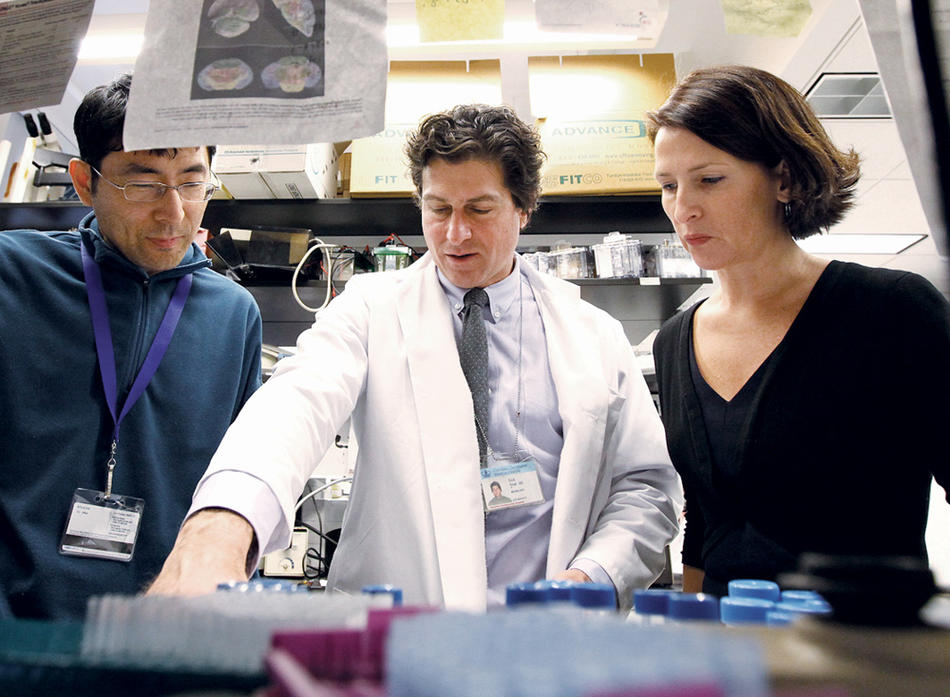The first part of the brain destroyed by Alzheimer’s disease is always the entorhinal cortex, a small sliver of tissue behind the ear that acts as a neuronal traffic cop, shuttling memories in and out of storage. Corkscrew-shaped brain tangles — a hallmark of the disease — appear there first before popping up in nearby memory centers and then ravaging the rest of the brain.
How exactly does the disease spread? Do compromised regions infect their neighbors? Or does the disease strike the whole brain at once but only become manifest as regions fall, one by one, in order of their resiliency?
The answer, which has serious implications for developing Alzheimer’s treatments, has long eluded scientists.
Now, in a remarkable case of scientific synchronism, two teams of researchers working independently of each other, yet using nearly identical methods, have made the same discovery: the protein tau, which composes the destructive tangles, is capable of migrating from brain cell to brain cell.
One of the research teams, led by Columbia neuroscientist Karen Duff, published its findings in the online journal PLoS One on February 1. The other, led by Harvard neurologist Bradley T. Hyman, published in Neuron on February 23.
“We heard about each other’s work over the past year and realized we were getting very similar results, so we decided to coordinate our press outreach,” says Duff. “I think we’re each excited to have our findings confirmed by another group.”
The teams used essentially the same study design: they genetically programmed mice to produce tau, but only within those sections of the brain that are affected by Alzheimer’s early on. “Since only certain parts of the mouse brain would be capable of producing this human protein,” Duff says, “if the tangles appeared anywhere else, it would mean the tau protein had traveled.”
Sure enough, the scientists, upon examining mouse brains at various stages of disease development, found that the tangles were spreading in the same pattern as seen in people with Alzheimer’s.
Duff and her colleagues hope this will lead to new types of drug treatments. Most Alzheimer’s drugs currently being developed aim not to stop these tangles but rather the sticky brain plaques that are another sign of the disease. Although tau tangles are ultimately responsible for killing brain cells by ripping them apart from the inside out — some scientists call tau “the executioner” — amyloid plaques appear first, which has led many researchers to think that by controlling the body’s production of amyloid they could head off the disease in its earliest stages. Drugs that target amyloid plaques have so far been ineffective, however, causing pharmaceutical companies to begin looking for ways to stop the tau tangles directly.
“To treat Alzheimer’s, we might need to go after both the plaques and the tangles,” says Duff. “Our next step is to find the mechanism by which tau jumps from one cell to another. This could help us prevent the disease from spreading to other regions of the brain, which leads to more severe dementia.”



